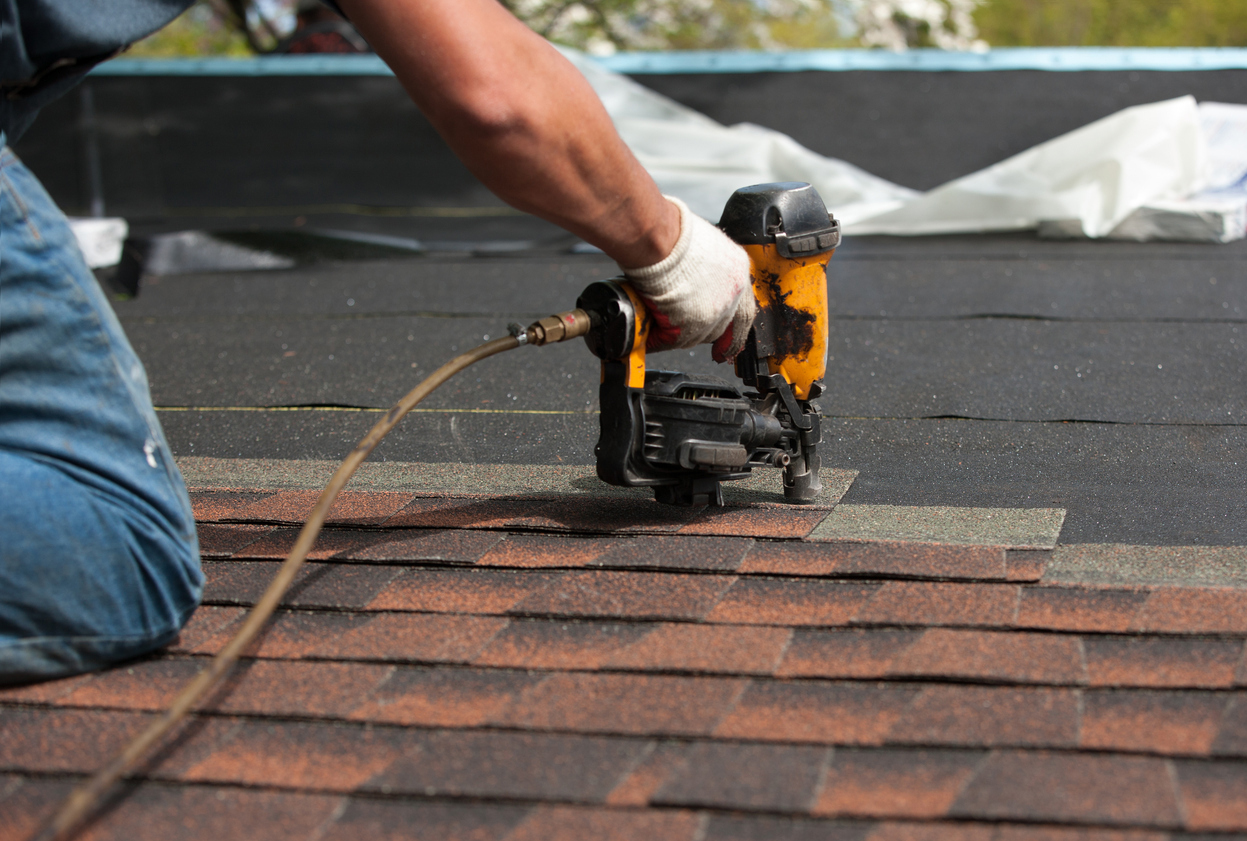
Perhaps one of the most pervasive roofing options in North America, the asphalt shingle roof is a durable and cost-effective roofing option. In order to get the most curb appeal from your installation, here are some tips on installing asphalt shingles for optimum results.
Shingles should be installed when the temperatures are between 40°F and 85°F. Too hot and you may tear the shingles or damage the granular coating. Too cold and the shingles become brittle which mean they may crack when bent or hammered.
Most installers leave the cellophane strips on the back of the shingles in place unless high winds require immediate sealing. If this is the case, additional shingle tab adhesive should be applied.
When shingles are installed in fall or winter, the temperatures may not be high enough to seal shingles and they may only seal when with warmer temperatures in the spring. If you want to seal the shingles in cold weather, apply a quarter-sized dab of shingle adhesive on all four corners and press down firmly.
With three-tab shingles, apply two quarter-size dabs of plastic roof cement under the lower corners.
For laminated shingles, apply four to six quarter-sized dabs, spaced evenly, about an inch above the bottom of the overlapping shingle.
Check that the roof deck is level before installing the underlayment. Any bumps or problems with the roof sheathing will show through the asphalt shingles. Address any issues before you start. If you find edges lifting they should be refastened or, in some cases, sanded down. If you can’t fix an issue, then the builder should. Remember; if you install the shingles it means you accept the roof as being ready for finishing.
Nails should be 3/8” from all edges and spaced 6” OC, along supports and 12”OC in the field. Staples must be half that distance apart. Always go by the local building code or your design professional’s instructions.
Installing underlayment can provide an extra barrier against moisture and it can prevent unevenness in the sheathing from telegraphing through to the shingles.
If the underlayment is wet and wrinkled during shingle installation, those wrinkles may show through.
Fasteners should be galvanized roofing nails with a minimum 12-guage shank and a head diameter of at least 3/8 inch rather than staples which may not provide the required hold.
Fasteners should be long enough to penetrate roof sheathing by ¾ inch or ¼ inch though sheathing that is thinner than ¾ inches.
Standard nailing patterns for three-tab shingles require four nails for each shingle. Follow manufacturer’s recommendations on nailing patterns and fastener types.
